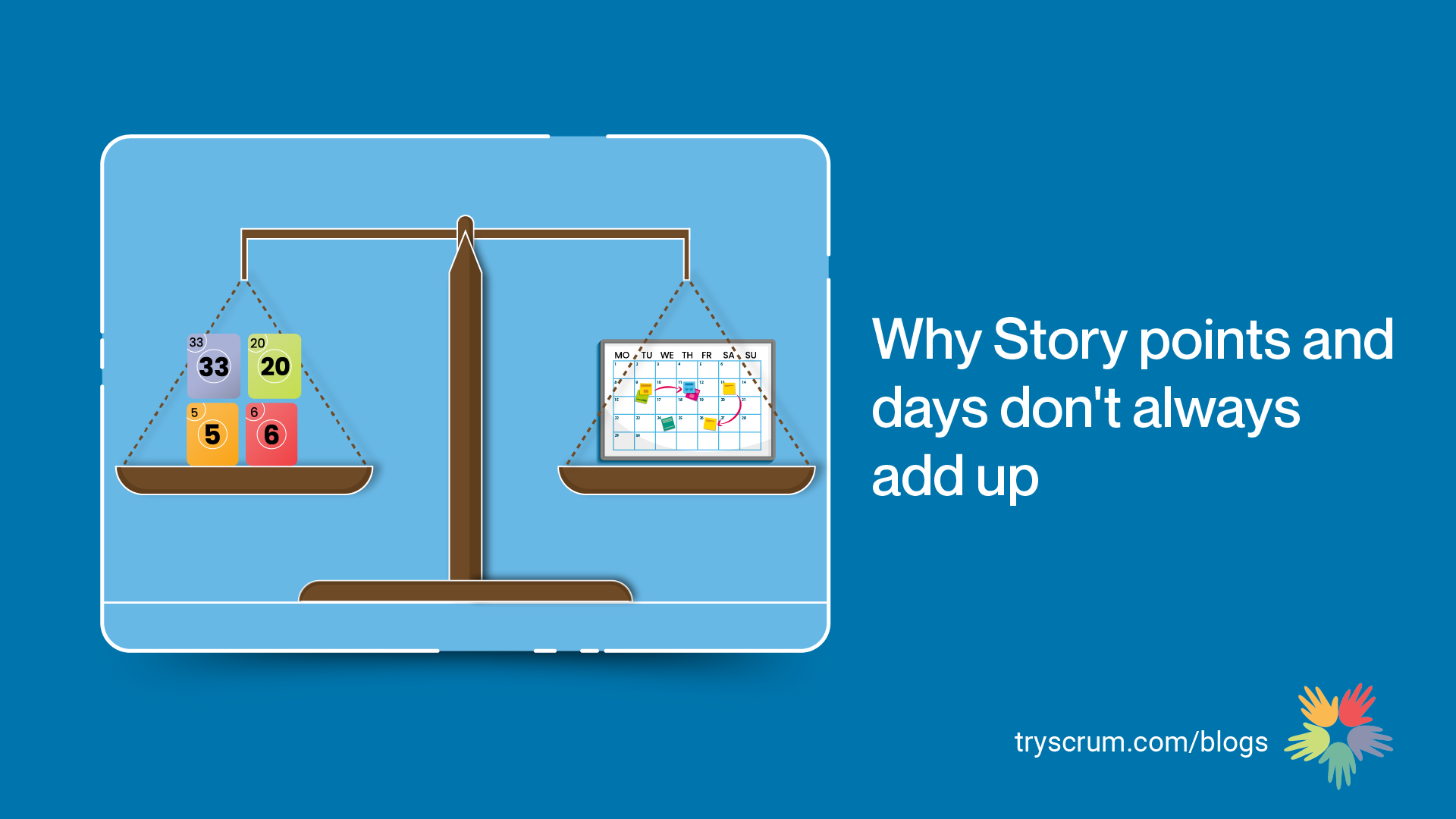
Why Story points and days don’t always add up?
Agile development is a product management approach emphasising collaboration, flexibility, and iterative progress. One of the key practices in agile is an estimation, which involves assigning a value to each task based on its complexity and the effort required.
Story points are a popular way of estimating work in agile development. They are a relative measure of effort that considers the task’s complexity, the skills required to complete it, and the potential risks and uncertainties.
What are the Story Points?
Story points are a measure used in agile development to estimate the effort required to complete a task. Typically, Fibonacci sequences (1, 2, 3, 5, 8, 13, 21, etc.) are leveraged, where each number represents increasing effort. Story points are not equivalent to hours or days but rather a relative measure of complexity and effort.
Why Story Points and Days Don’t Always Add Up?
a. Complexity vs Effort
Story points are a measure of effort, not time. Therefore, assuming that one story point equates to a specific number of hours or days is not a good idea. Some tasks may be relatively simple but time-consuming, while others may be complex but quick to complete. As a result, the number of story points assigned to a task may sometimes align with how many days it takes to complete it.
b. Team Productivity
Another reason story points and days don’t always add up is that different teams have different competency levels and stages of maturity. As a result, some teams may work faster or more efficiently than others, even on the same tasks. This can be due to differences in skills, experience, motivation, maturity or collaboration. As a result, teams may estimate the same number of story points in different amounts of time.
c. External Factors
External factors such as changes in requirements, availability of resources, or unexpected issues can also impact the relationship between story points and days. For example, suppose a team encounters an uncertainty which they would not have even thought about would make a particular story even more complex. In that case, the days to complete a task may exceed the estimated number of story points even if they establish a benchmark. Above all, establishing a benchmark might kill the empirical approach, as the story point technique is one of the ways toe embrace that uncertainty.
How to Calculate Story Points
Story points are a measure used in Agile software development to estimate the difficulty and effort required to complete a user story or task. Story points are typically assigned using a consensus-based approach that involves the development team and other stakeholders. Here’s how to calculate story points:
● Establish A Baseline:
Typically, Teams choose a user story of moderate complexity and assign it a story point value of, say, 5. This will serve as the baseline for future estimation.
● Define Criteria for Story Point Values:
Agree on a set of criteria that will be used to assign story point values. For example, a story point value of 1 might represent a less complex task, while a value of 8 might represent the most challenging piece of work.
● Estimate User Stories:
The team should estimate each user story based on the criteria established in step 2. This is typically done using a planning poker technique, in which each person privately assigns a story point value to a user story. Then the group discusses the values until a consensus is reached.
● Use the Baseline for Comparison:
As new user stories are estimated, compare them to the baseline story assigned five story points. This will help ensure that the relative difficulty of each user story is consistent with previous estimates.
If a user story turns out to be more difficult or easier than expected, the story point value can be adjusted accordingly in future estimations.
● Adjust Estimates As Needed:
Overall, estimating story points aims to create a shared understanding of the difficulty and effort required for each user story. As a result, the development team can plan and prioritise their work effectively.
Many organisations use story points to estimate the difficulty and effort required for completing tasks or user stories when measuring team productivity. However, it’s common for story points and days to only sometimes add up, leading to confusion and frustration. Here are some tips on how to improve estimations in this regard:
❖ Use Story Points As a Relative Measure:
Remember that story points are a relative measure of complexity and effort, not an absolute one. They are meant to provide a rough estimate of how difficult a task is compared to others and should differ from the actual time required to complete it.
❖ Refine Your Estimation Process:
Work with the team to refine your estimation process and ensure everyone is on the same page when assigning story points. This can include defining clear criteria for each point value, practising estimation techniques like planning poker, and revisiting estimates as needed.
❖ Review Past Estimates:
Review past estimates to see how accurate they were and identify areas for improvement. This can help the team learn from past mistakes and make better estimates in the future.
❖ Focus On Continuous Improvement:
Encourage the team to focus on continuous improvement, both in terms of their estimation process and their overall productivity. This can include regular retrospectives, learning opportunities, and ongoing communication and feedback.
Ultimately, the team should focus on creating valuable outcomes for your customer. For example, if you spend too much time getting better at estimation, the focus might shift to get better at estimate, not at delivering value. The Story point technique aims to create a collaborative and supportive work environment that allows the team to work efficiently and effectively together.
Conclusion-
Using story points to estimate the difficulty and effort required to complete tasks or user stories is common in Agile software development. However, it’s important to remember that story points are a relative measure of complexity and effort, not an absolute one. It’s common for story points and days to only sometimes add up, leading to confusion and frustration. Organisations can achieve their goals and deliver high-quality work by creating a collaborative and supportive work environment that allows the team to work efficiently and effectively. Ultimately, the key is to balance the need for accuracy and precision with flexibility and adaptability and continuously strive for improvement and excellence.




